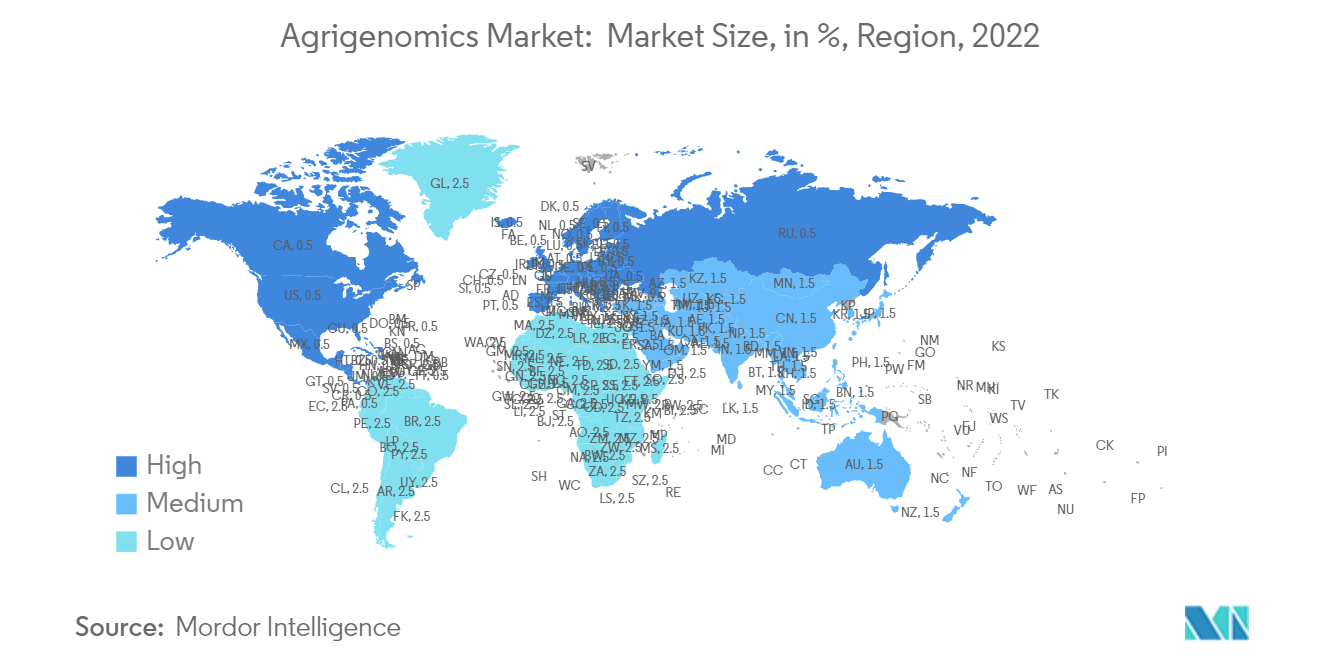Market Trends of Agrigenomics Industry
Growing Food Demand and Shrinking Land
- The global population has been increasing rapidly and is projected to reach 9.7 billion by 2050. With this increase in population, there is also a growing demand for food, which has put pressure on the agricultural sector to produce more food. However, the agriculture industry faces several challenges, including climate change, land degradation, water scarcity, and limited resources, making it difficult to meet the increasing demand for food.
- On the other hand, due to industrialization and urbanization, the available arable land is decreasing in many regions globally. Hence, increasing crop productivity is needed to meet the demands. The application of agrigenomics increased crop productivity by developing high-yielding crop varieties and sustainable solutions for livestock products.
- Farmers, breeders, and researchers can easily identify the genetic markers linked to desirable traits, informing cultivation and breeding decisions using modern technology. Although new plant technologies are continuously being developed to fight pest attacks, they are also leading to the development of new and difficult-to-kill strains of pests. The losses in major crops due to fungi are enough to feed nearly 9% of the global population. Thus, it is the key strategy farmers adopt to meet global food demand.
- According to the Food and Agriculture Organization (FAO), many countries are developing sustainable grains to feed the growing world population while safeguarding the natural environment, diversifying food production, protecting plant and animal health, and reducing the drudgery of farming. Genetic resources are also crucial to livestock breeding and protection. Therefore, the government supports the development of policies and standards to protect public and animal health while managing natural resources and developing improved technologies to meet animal genetic resources.

North America Dominates the Market
- The North American agrigenomics market is experiencing steady growth due to the increasing adoption of high-yielding varieties, as they can reduce the usage of harmful pesticides by enhancing the resistant power during the initial stages. Genotyping within agrigenomics provides breeders and researchers powerful, cost-effective tools to detect markers associated with complex genetic traits.
- According to the United States Department of Agriculture (USDA) report, the greater adoption of genetically engineered (GE) seed varieties in crops like corn, upland cotton, soybeans, canola, and sugarbeets is witnessed in the region. For instance, herbicide-tolerant (HT) crops tolerate specific broad-spectrum herbicides (such as glyphosate, glufosinate, and dicamba). Insect-resistant crops contain a gene from the soil bacterium Bacillus thuringiensis (Bt) that produces an insecticidal protein.
- Although other genetically engineered (GE) traits have been developed (such as virus and fungus resistance, drought resistance, and enhanced protein, oil, or vitamin content), herbicide-tolerant (HT) and Bacillus thuringiensis (Bt) traits are the most commonly used in US crop production.
- The adoption of agrigenomics is majorly attributed to overcoming the usage of pesticides in the United States. Strong R&D and innovation of new technologies, coupled with the increasing merger and acquisition (M&A) activities, are the major factors fueling the region's market growth. The greater acceptance of genetically modified (GMO) crops in the United States is a result of their perceived benefits, such as increased yields, reduced use of pesticides, and improved crop quality.


